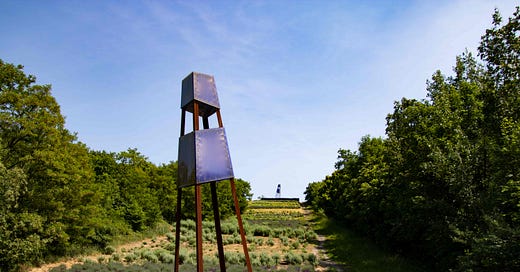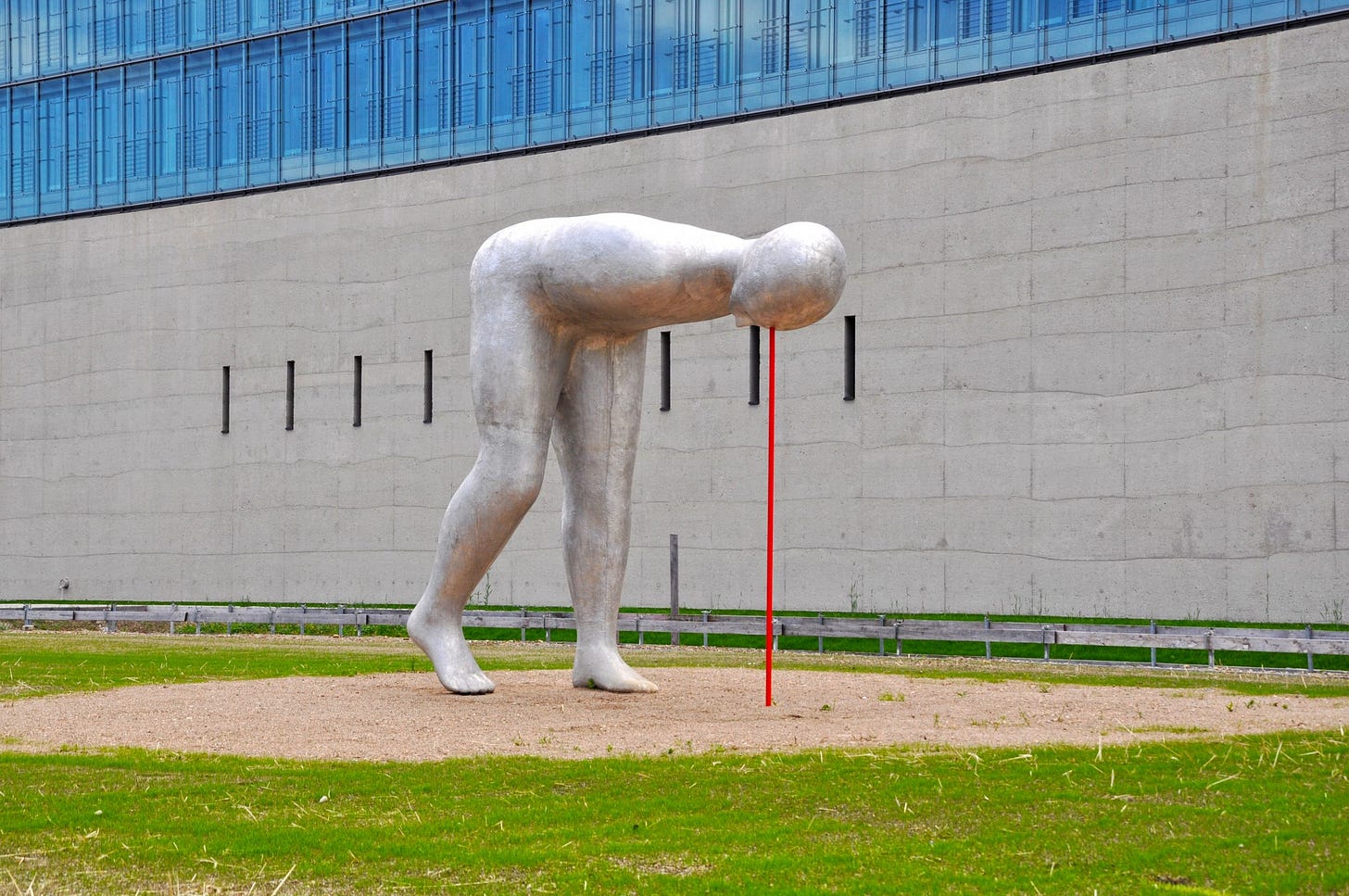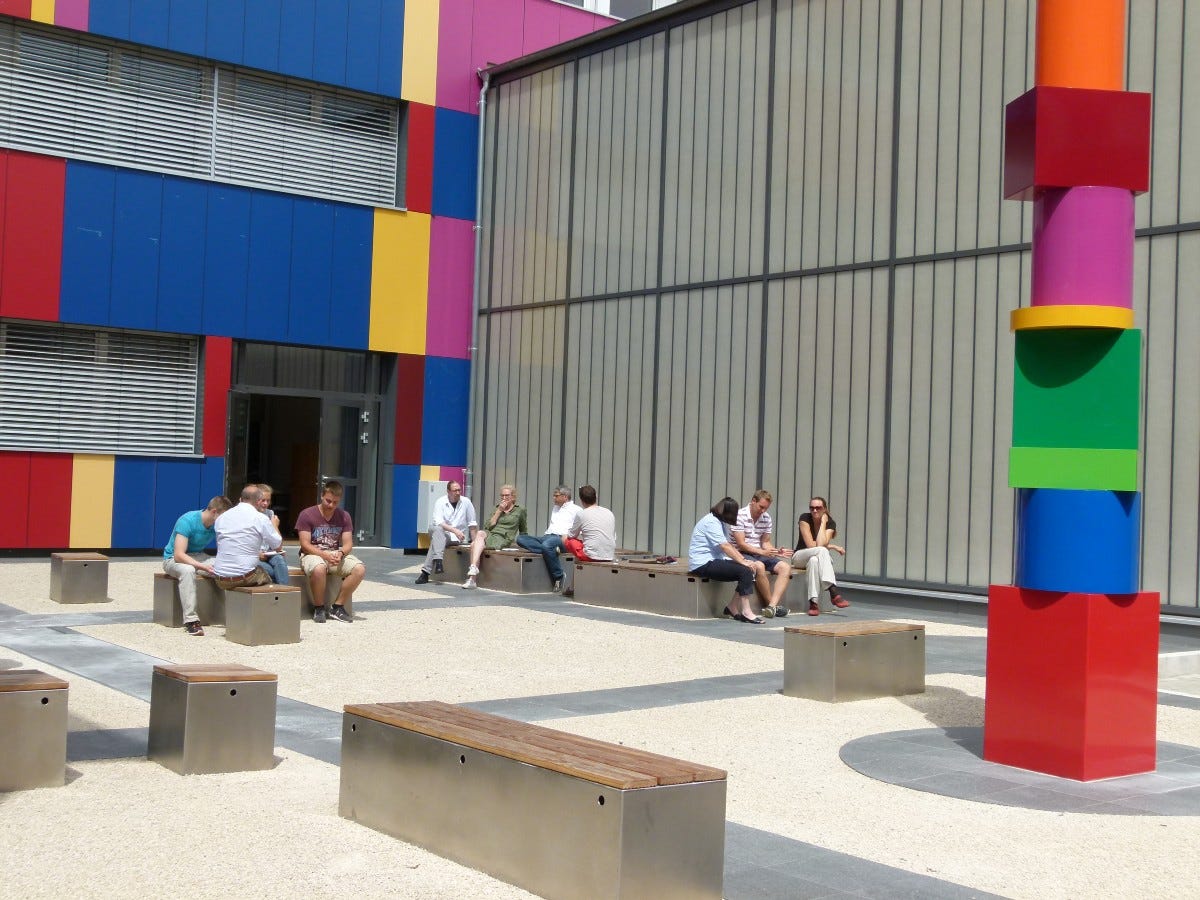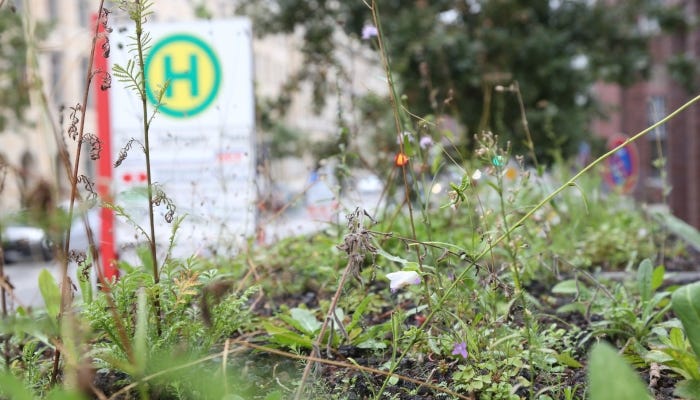10th International Cradle to Cradle Congress
The future of urban transformation combines art, science, technology and politics into an integrative concept for sustainable progress
With a participatory approach that involves many different stakeholders, innovative solutions will be developed that meet the cultural, ecological, and economic challenges of our time.
The role of art in construction as a mediator for cultural transition should be highlighted and regarded as a key element in transforming society into more sustainable cities.
This interdisciplinary approach not only offers practical solutions but also promotes global dialogue and the formation of an international, future-oriented network—a decisive step to actively shape change and secure the quality of life for future generations.
From the National Circular Economy Strategy to the promotion of biodiversity, the Cradle to Cradle Congress is driving the discussion about the future of our cities.
The 10th International Cradle to Cradle (C2C) Congress, which will take place on September 17th and 18th, 2026 at the Technical University of Berlin, marks a significant milestone in the debate on sustainable urban development, industrial innovation, and cultural transformation.
In an era in which global crises (from climate change to resource scarcity) increasingly shape the discourse, the Cradle to Cradle principle is at the forefront as a pioneering concept for a circular economy and ecological resilience.
At the same time, it is time to increasingly understand art in construction as an essential mediator for cultural transition that supports the transformation of urban spaces on multiple levels.
Since the first event in 2014, the C2C Congress has continuously evolved. The number of participants has nearly doubled, and over the years more than 7,000 experts from business, politics, science, and civil society have contributed their perspectives. Building on these successes, the Congress provides a platform to discuss forward-looking concepts in the fields of circular economy, biodiversity, and sustainable urban development.
The transformation in the national circular economy strategy, particularly in resource-poor countries such as Germany, requires a rethinking. The promotion of biodiversity is increasingly regarded as an integral component of a holistic ecological transformation. In this context, innovative approaches in architecture and urban planning play a central role. Public art and artistic interventions in construction can act as bridges between technological progress and cultural heritage, helping us to understand our processes through artistic expression and to transform urban spaces into living organisms.
The integration of artistic elements in the construction and design of public spaces is increasingly recognized as a strategic instrument for promoting sustainability and social integration. Art in construction goes far beyond mere decorative measures: it creates identity, fosters dialogue, and helps to make urban environments future-proof.
The C2C Congress aims to intensively examine this topic and include examples in which artistic interventions not only enhance visual appeal or correspond to materiality but also strengthen the ecological functions of urban spaces.
Artistic projects that include modular roof gardens, green facades, or interactive installations demonstrate how creative approaches can realize new usage concepts. These projects contribute to transforming public spaces into “green-blue corridors” that not only improve the urban climate but also create habitats for flora and fauna. The contribution of artistic interventions to the transformation of urban landscapes is increasingly recognized as a crucial factor in the fight against climate change.
A key focus of the Congress is the integration of modern technology with ecological concepts. The digital transformation and the use of artificial intelligence open up new possibilities for developing sustainable and circular products. Discussions will address how companies can “lease” raw materials instead of owning them, thereby optimizing the material cycle and promoting long-term economic stability. The linkage of technologies such as NFC chips for material identification and digital platforms for monitoring resource cycles is at the forefront of interdisciplinary research.
The promotion of biodiversity is a central pillar of modern environmental policy. The C2C Congress will illustrate how closed cycles and nature-based solutions can help restore species diversity in urban areas. Through innovative approaches in urban greening and sustainable planning, natural ecosystems can be strengthened while simultaneously improving the quality of urban life. In practice-oriented panels and workshops, strategies will be presented that minimize the impact of climate change, resource scarcity, and environmental pollution while reducing the ecological footprint of cities.
A fundamental aspect of the Congress is to convey that art is not merely an aesthetic tool but also a societal and ecological instrument. Art in public spaces helps to accompany and shape the cultural transition in times of multiple crises. By employing artistic means in conjunction with technological and ecological approaches, a holistic perspective is created that enables both the challenges of climate change and the needs of an increasingly interconnected society to be addressed.
It becomes evident that the future of urban transformation is interdisciplinary. It combines art, science, technology, and politics into an integrative concept for sustainable progress.
KB
References
Nidwaldner Museum - Performance Art
https://www.nidwaldnerzeitung.ch/zentralschweiz/nidwalden/performance-art-bespielt-winkelriedhaus-ld.2337823C2C Congress at TU Berlin
https://www.tu-berlin.deState Museum of Egyptian Art, Munich
https://www.muenchenarchitektur.com/architektur-highlights/21-kultur-und-bildungsbauten/20804-aegyptisches-museumGlobal Greening – International Cradle to Cradle Projects
https://www.globalgreening.orgArt in Construction as a Cultural Mediator
https://www.meyer-groenhof.de/Kunst-am-BauEU Circular Economy Directive – EUR-Lex
https://eur-lex.europa.eu/legal-content/DE/TXT/?uri=CELEX%3A32005L0036Ruhrpottblick - 22 Green-Blue Corridor
https://www.ruhrpottblick.de/22-der-blaue-korridor/UNESCO Convention on the Protection and Promotion of the Diversity of Cultural Expressions
https://www.unesco.de/kultur-und-natur/kulturelle-vielfalt/unesco-konvention-kulturelle-vielfaltEuropean Commission for Culture and Creativity
https://ec.europa.eu/cultureEuropean Commission – Artificial Intelligence
https://ec.europa.eu/digital-single-market/en/artificial-intelligence












